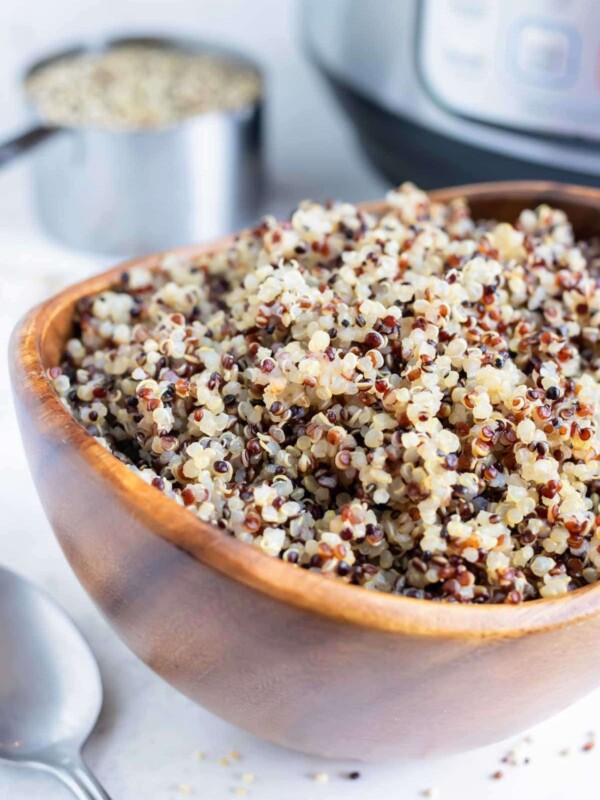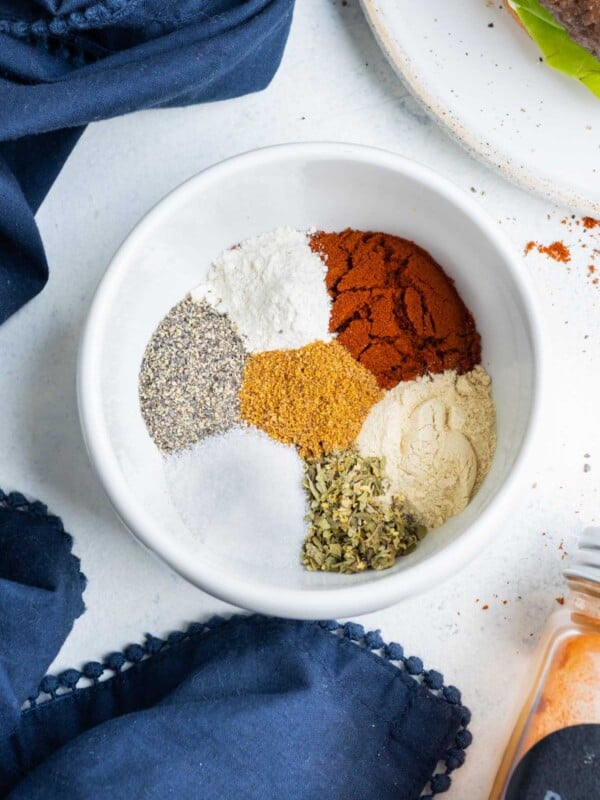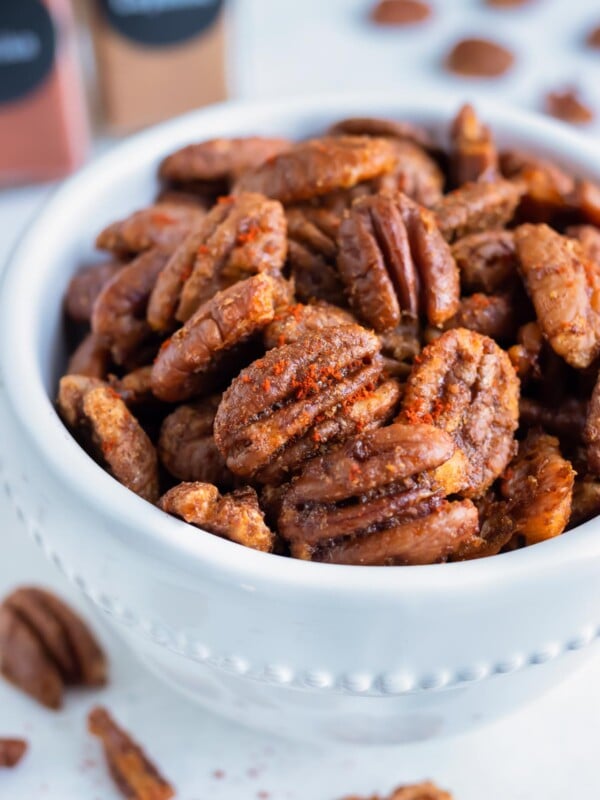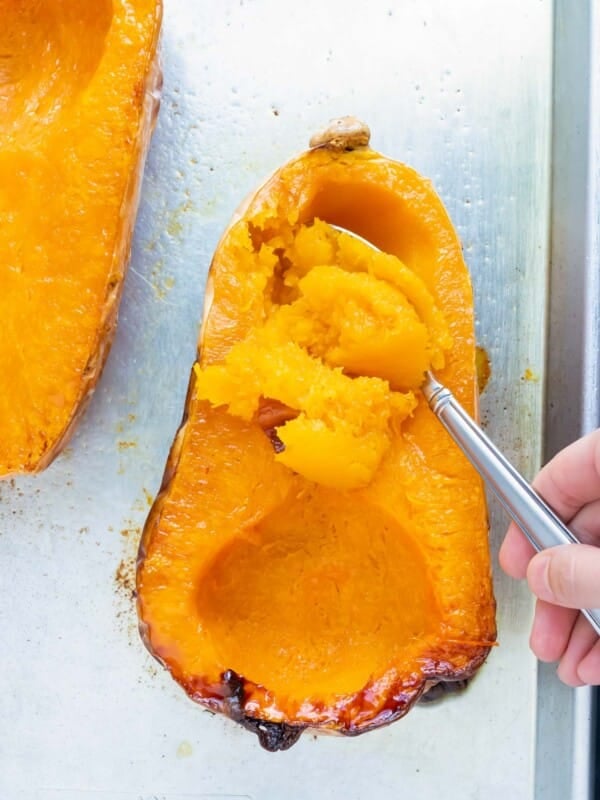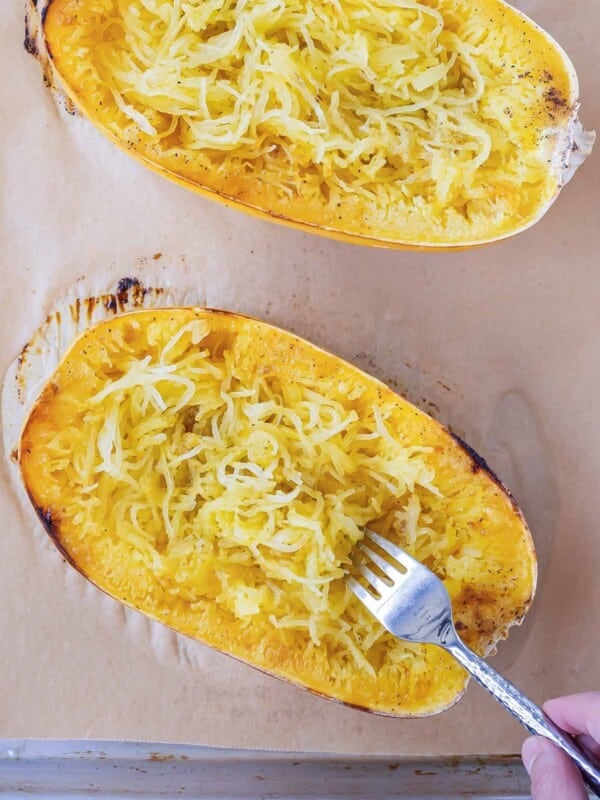What is quinoa?
Quinoa is technically the seed of a flowering plant in the amaranth family, though it closely resembles a whole grain. It is packed with nutrients, fiber, and protein like most whole grains.
Quinoa is an ancient grain, originally cultivated in the Andes over 7,000 years ago, which is why it is often called the “mother of all grains.” As the 2000s rolled in, quinoa made a big appearance in many grocery stores because of its high nutrient content and ample health benefits.
What is gluten?
Gluten is a protein that is found in grains like wheat, rye, and barely. Gluten isn’t necessarily bad when consumed in moderation, but it is a health hazard to people who have celiac disease or gluten sensitivities. Ingesting gluten with these health issues causes inflammation, skin allergies, diarrhea, and overall digestive system problems.
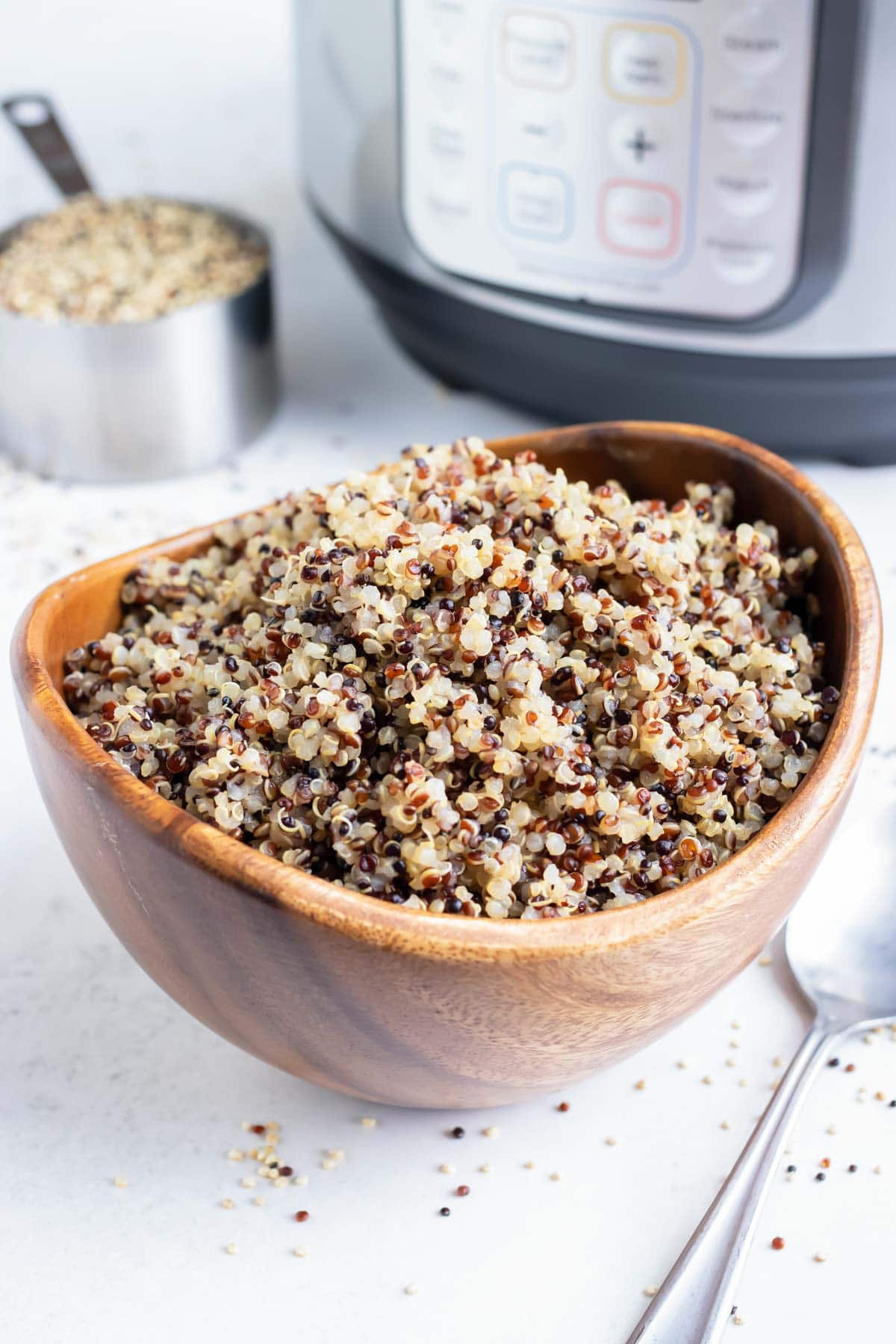
Is quinoa gluten-free?
Yes, the quinoa grain is a gluten-free food! It’s safe to eat for anyone who has a gluten intolerance, but only if it clearly has a gluten-free label on the package. Why? Because quinoa products are likely to be cross-contaminated with other gluten-containing grains in the manufacturing process.
Why do people eat gluten-free?
People eat gluten-free out of choice or requirement. A gluten-free diet helps manage the symptoms experienced by those with celiac disease and other medical conditions with gluten consumption.
On the other hand, the gluten-free diet has gained popularity over the past few decades because people have claimed to lose weight easier, have an increased amount of energy, and an improved overall health.
While some of these claims may be true for some, it doesn’t necessarily mean that it’s the long-term solution to non-gluten related issues.
If you are experiencing any energy or overall health issues, speak with your healthcare providers and nutritionists to learn more about the gluten-free way of eating before deciding if it’s the best choice for you.
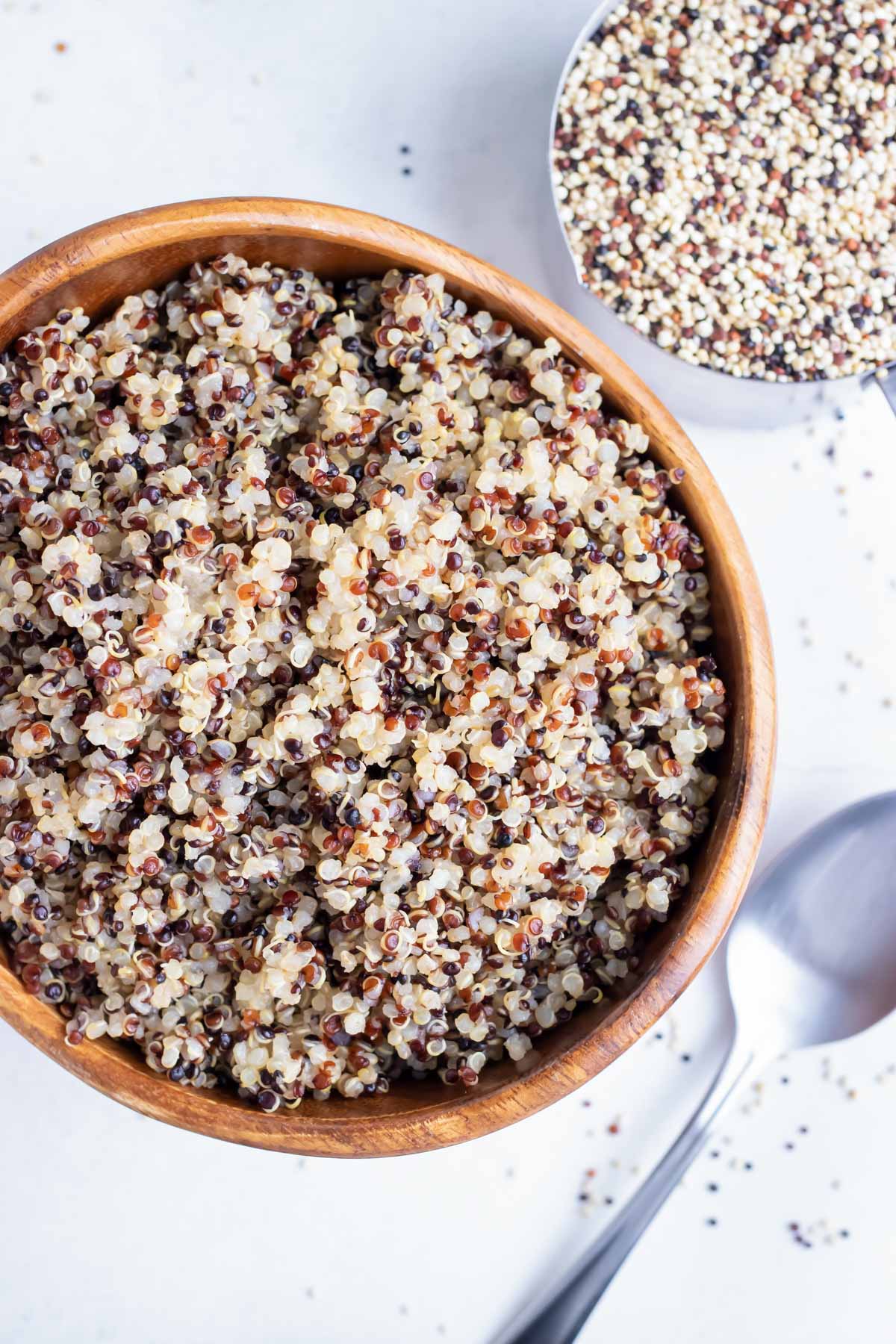
What’s the nutritional value in quinoa?
Quinoa is a complete protein because it contains all of the 9 essential amino acids. In 1 cup of quinoa, you’ll be getting:
| 8 grams protein |
| 5 grams fat |
| 2 grams sugar |
| 39 grams carbohydrates |
| 220 total calories |
Additionally, quinoa contains other nutrients like magnesium, calcium, and fiber. Overall, when they say quinoa is a superfood, it really is a superfood. It can really help maintain your immune system when paired with other great nutrient-dense foods in your daily diet.
What are the types of quinoa?
There are several varieties of quinoa, so we’ll just focus on the 3 most common quinoa grains you’ll find at your grocery stores. Each type of quinoa has a different taste and texture that work well with a range of pairings!
White Quinoa
With the mildest flavor, this quinoa has a soft texture with fluffy, light-weight grains. White quinoa is the most common type. You can easily replace rice with white quinoa, and even put it in your baked goods!
Red Quinoa
With nutty notes, red quinoa is stronger in flavor and has a crunchier texture than white. Red quinoa keeps its shape after cooking, and is really tasty in salads and starchy recipes.
Black Quinoa
Black quinoa is sweet and earthy. It also has a crunchy texture, and it adds depth and color to any dish.
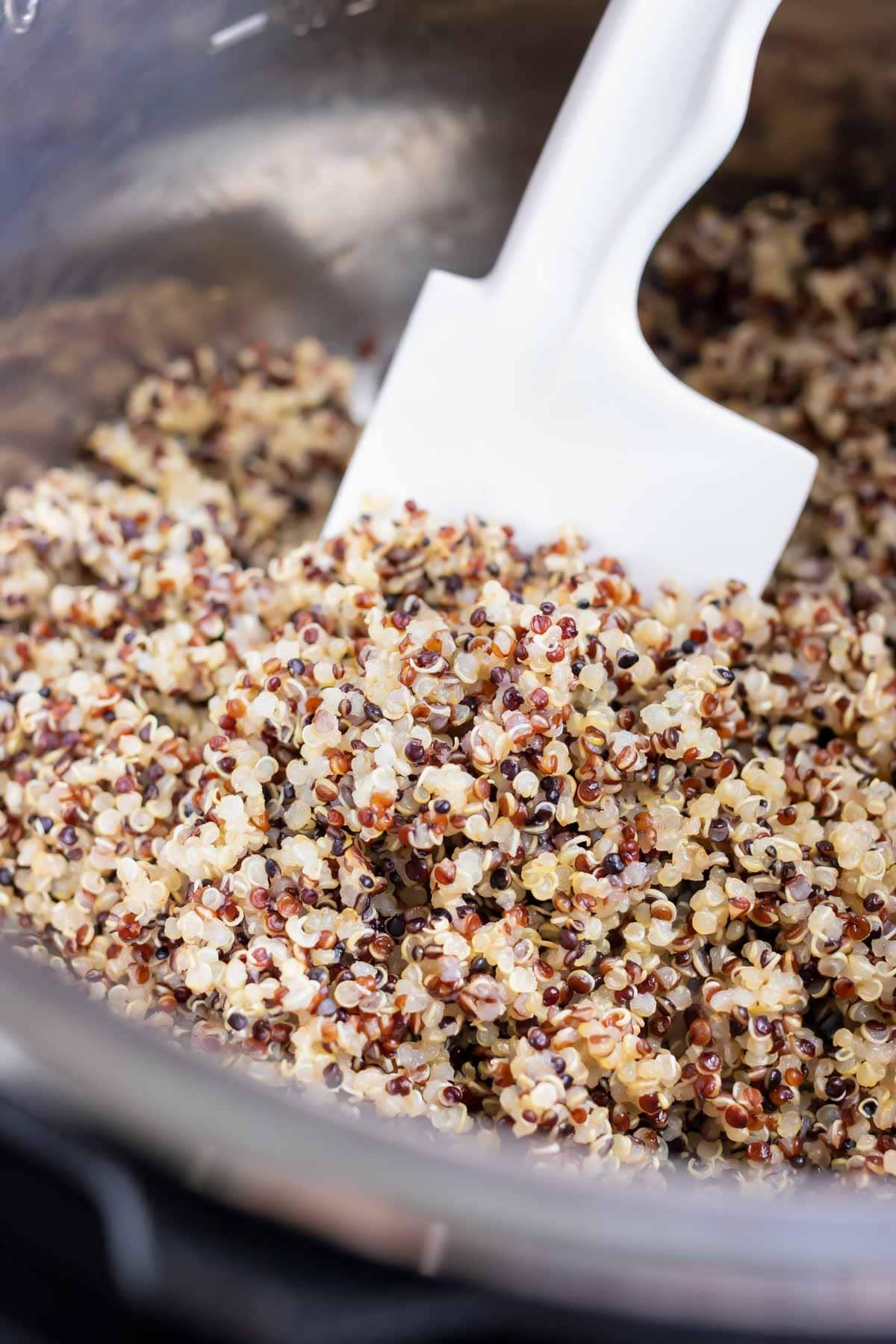
Is quinoa flour gluten-free?
Yes, quinoa flour is gluten-free IF it is clearly labeled as such. Like many other gluten and gluten-free grains, quinoa can be eaten in different forms like flour. Quinoa flour is made by grinding up quinoa seeds or quinoa flakes. It’s the same concept as almond, oat, rice, and chickpea.
Is it better to eat gluten-free quinoa?
Yes, eating quinoa in general is a great addition to anyone’s diet, gluten-free or not. For those who cannot or choose not to eat gluten, as long as it’s labeled as certified gluten-free, then you’re good to go. Here are 7 reasons why quinoa is a healthy choice:
Lowers Blood Sugar
Eating quinoa can help regulate blood sugar. It can reduce the risk of type II diabetes and minimize the risk of being diagnosed by 33%. Additionally, quinoa can lower the negative impact of phytoecdysteroids, which increase blood sugar levels. Quinoa also helps manage blood sugar levels due to its high dietary fiber content.
Lowers Cholesterol
If you can incorporate about 1.5 ounces of quinoa in your daily diet, it can lower LDL cholesterol (the bad kind) and triglyceride levels.
Reduces Inflammation
Quinoa is rich in antioxidants that fight against inflammation in the body. This is beneficial to anyone who has inflammatory chronic diseases.
Promotes Weight Loss
Incorporating more whole grains like quinoa in your diet gives your body the daily nutrients it needs. Quinoa is such a simple way to do this, and it may help regulate your metabolism to lose weight.
Improves Digestion
When you consume quinoa, it promotes beneficial bacteria that your stomach needs in order to digest your food properly. Incorporating quinoa and other whole grains in your diet helps make for a happy gut!
Increases Heart Health
Quinoa contains omega-3 fatty acids that keep the heart healthy. This can help reduce the risk of heart disease. Consistently eating quinoa may also help lower the fat in the blood vessels, resulting in a healthy heart.
Reduces Cancer Risk
Quinoa may assist in reducing cancer risk. It contains cancer-fight compounds like polyphenols that stop the cause cancer cell production.
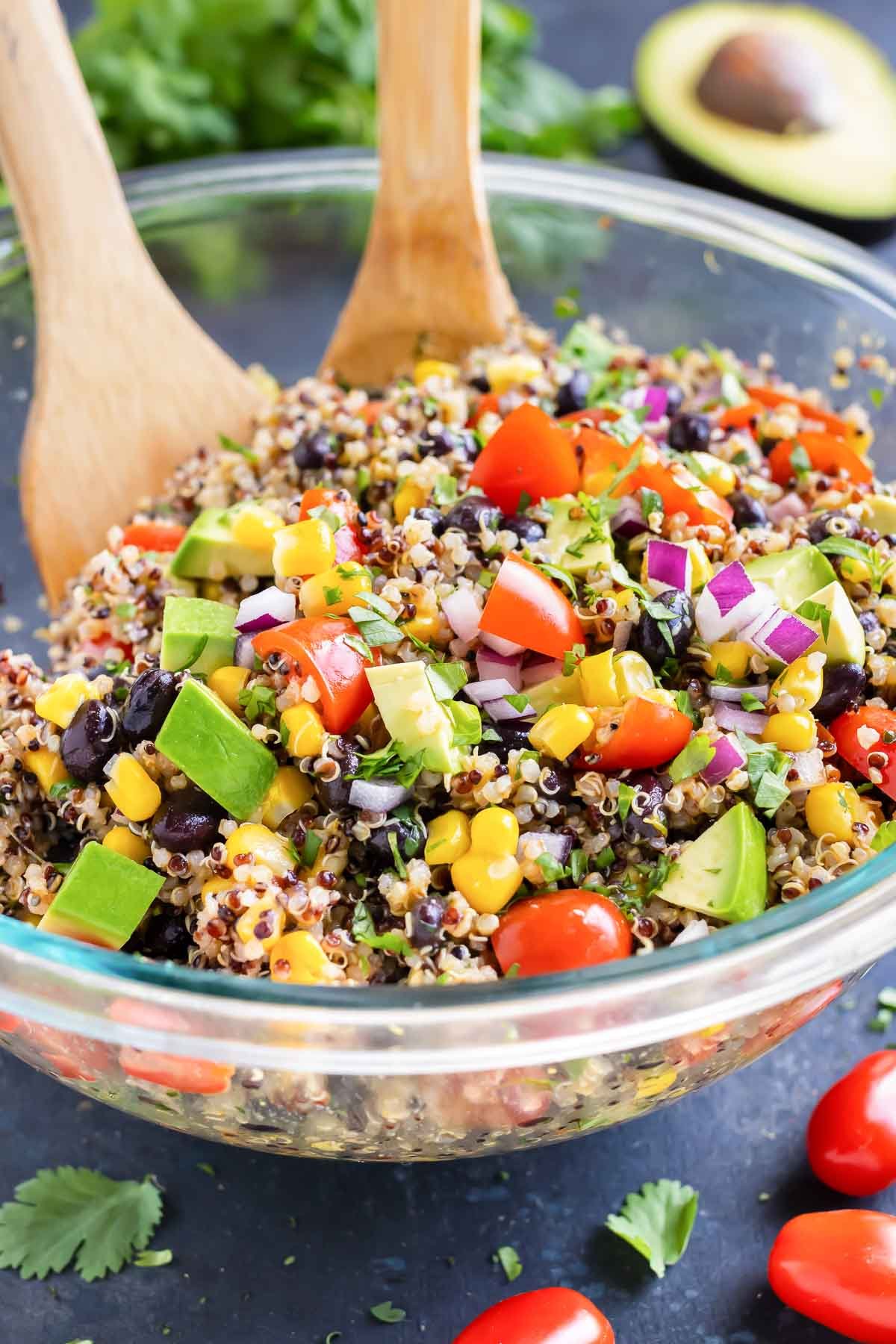
How to Incorporate Quinoa in Every Day Meals + Favorite Recipes!
The best trick to incorporate quinoa in your daily diet is to make more than you need, so you can refrigerate the leftovers to use for another side dish or meal. Here are some other ways to put quinoa into your menu rotation:
- Add it to oatmeal or overnight oats:
- Eat it plain with butter
- Toss it in salads
- Mexican Quinoa Salad with Avocado
- Quinoa Tabbouleh
- Thai Peanut Quinoa Salad
- Summer Vegetable Quinoa Salad with Lemon Vinaigrette
- Avocado BLT Quinoa Salad with Ranch Dressing
- Blend it it in smoothies
- Add to granola recipes
- Add it to a breakfast hash or lunch bowl
- Add to homemade granola bars
- Add to pancakes, puddings, and muffins
- Cook in soups
- Incorporate it in your favorite go-to dinners
- Use it as a substitute for rice

